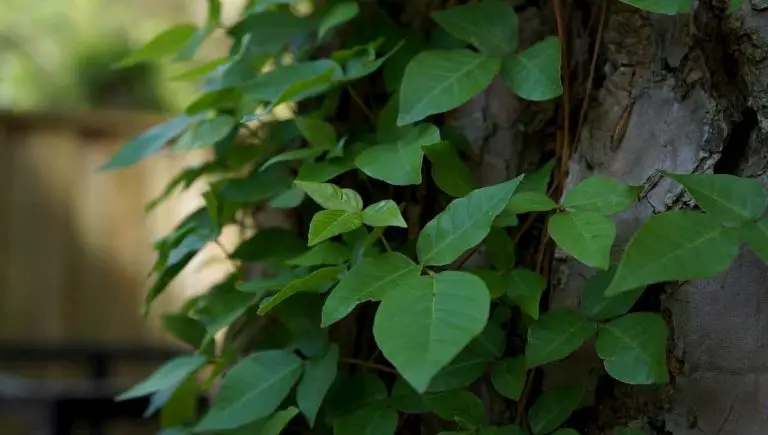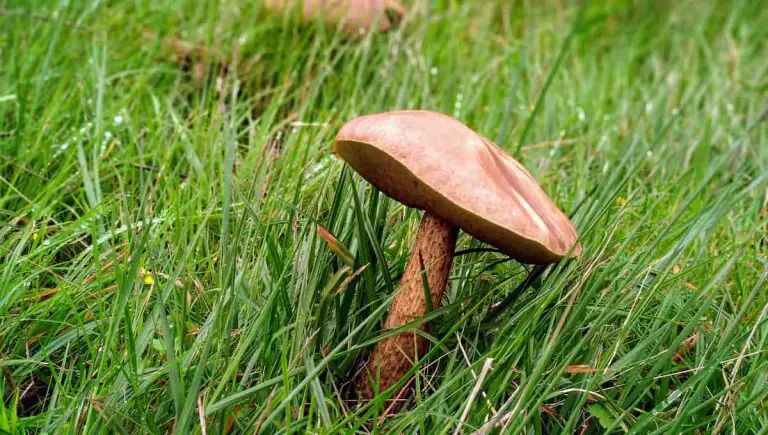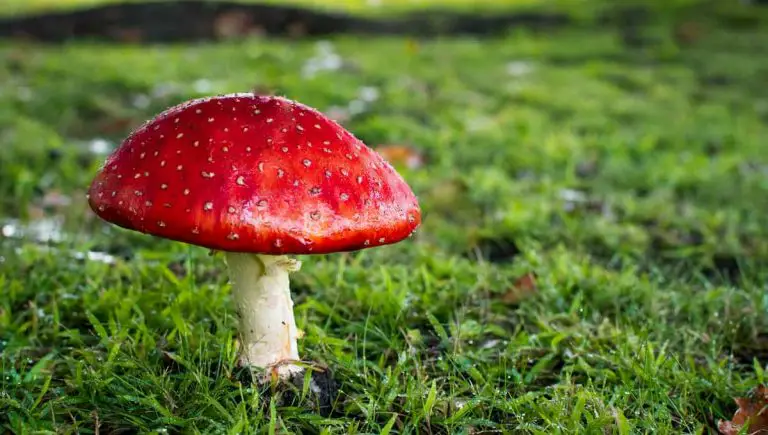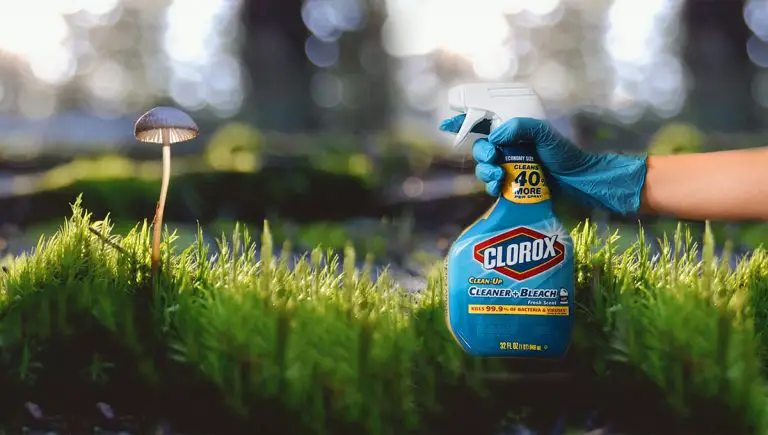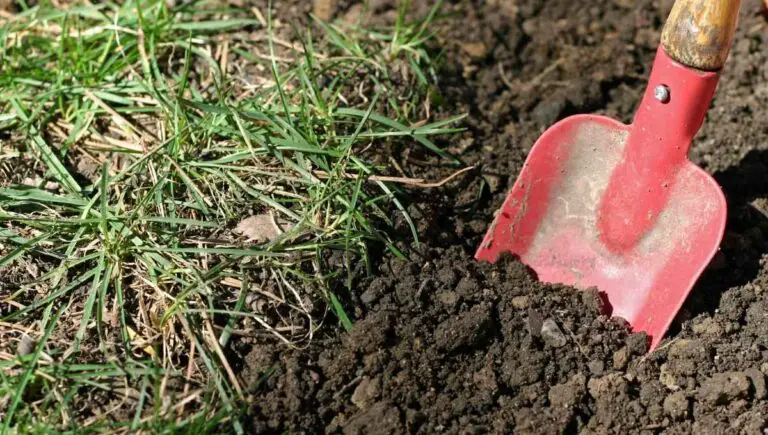Can a Koi Pond Be Too Deep? (We Asked the Experts)
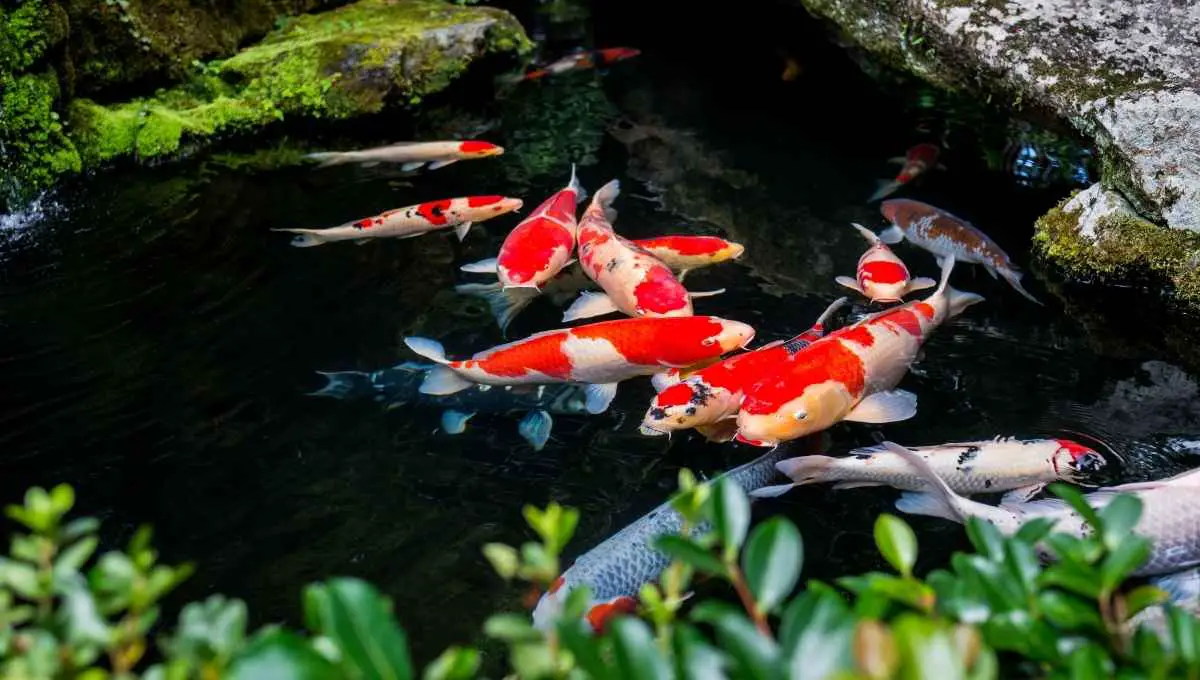
Having a koi pond is a great aesthetic choice for your yard. If you’re going to have one, you’re going to want to do it right, but how deep is too deep for a koi pond? After all, you want to be able to see your fish, right?
A koi pond should be between three and ten feet deep. It’s essential your koi pond has the proper depth. Too deep, and you risk not being able to see your fish. Too shallow, and you risk predators feeding on your beautiful fish.
There is a lot to consider when it comes to the depth of your koi pond. This article will answer some of the most common koi pond questions and delve deeper into how deep your pond should be!
This post contains affiliate links from Amazon and other stores. This means Yard Blogger may earn a commission if you make a purchase using any of our links. Please refer to our full affiliate disclosure policy for full details.
Here’s a Quick Pro Tip!
If you’re concerned that your pond is too deep, you’re probably also concerned about making sure your koi have enough oxygen and that the water stays clean. We’ve got you covered!
Here are our top picks for keeping your pond clean and aerated:
1. HQUA Pond & Lake Aeration System – This aerator covers up to a three-acre pond and will keep your fish happy and oxygenated.
2. Firestone Pond Liner – A liner can keep your water where it belongs and this one will last for many years.
3. Fencing – A fence will keep critters (and uninvited humans!) out without marring the view of your beautiful pond.
Common Koi Questions
Building a new koi pond brings with it a lot of questions about the dimensions of your pond. We’ve gathered up some of the most common koi questions so you can get your project started right!
Why Is Koi Pond Depth Important?
Koi need their water to be a certain depth, or they will not be able to swim properly. Having too much or too little water also impacts their ability to breathe correctly. Having the proper depth ensures plants and fish get the right mix of sun and oxygen.
If the pond is too deep, you’ll have to worry about vegetation not being able to survive without enough sunlight. Too shallow, and your koi may be prey for predators.
Additionally, keep the size of your koi in mind when building. They’ll need room to grow!
Does Pond Depth Impact Koi Growth Rate?
The depth of their pond can impact koi. As a general rule, the deeper your pond, the larger your koi will grow. Your koi pond should be at least three feet deep. Your pond should be less than ten at the deepest section unless you have jumbo koi.
Even regular koi fish can grow quite large, so it’s essential to have enough space for them to move and grow. Not having enough depth in your pond can stunt the koi’s growth.
Having too little space also stress koi out, making them more likely to fight amongst themselves.
Will Koi Fish Thrive in Any Depth of Water?
Koi need at least three feet of water to thrive. This allows for optimal growth and prevents predators from snatching them easily. The sweet spot for optimal koi conditions is between three and ten feet of water in the deepest section of the pond.
Having a deeper section means the fish have a safe spot to escape from predators.
However, having a shallow area of around three feet ensures your fish are getting the sunlight they need and allows you to be able to see and enjoy these beautiful fish!
What if a Koi Pond Is Too Shallow?
A koi pond that is too shallow can be very detrimental to the health of your koi. If you live in an area with predatory birds such as herons, having a depth of fewer than three feet is just giving the herons an easy meal.
Having a shallow pond can also mean other predators, such as raccoons or foxes, can prey on your fish. Additionally, koi can get overly stressed when too many are in a small space together.
This can lead to them fighting and injuring each other.
You might also enjoy our post on If You Can Dig a Pond on Your Property
Why Depth is Important
If you’re digging a new pond, you need to know how deep it should be. There are many factors to that decision. Here are some common questions and answers about pond depth.
How Deep Should Your Koi Pond Be?
The ideal koi pond should be between three and ten feet deep. These levels allow your koi to protect themselves from predators and ensure all vegetation can get enough sunlight.
It may not be harmful to your pond to be more than ten feet deep, but it is mostly unnecessary. Having it too deep can make it more difficult to clean, which may make your fish sick, and the water smelly. (Ew gross!)
What Is the Best Depth for a Koi Pond?
The best depth for a koi pond is deep enough for fish and vegetation to be safe from predators but not deep enough that fish can develop swim bladder or other ailments from crushing water.
Penn State has a site that gives you an excellent outline for the basic measurements of an ideal koi pond. The best practice is still considered to be between three and ten feet deep.
What Depth Do Koi Carp Prefer?
Koi carp, most commonly referred to simply as koi, prefer a pond depth of over three feet. They need enough space to develop fully. Also, this depth gives them a safe space to avoid their common predators, mostly herons, and other predatory birds.
If you live in a cold climate, it is doubly important that your pond be closer to ten feet deep. This depth ensures the pond will not completely freeze in winter, killing your beautiful koi.
This depth also allows the water to regulate, so the fish do not freeze in the winter or overheat in summer.
How Do I Know if My Pond Is Deep?
The easiest way to know if your pond is deep is to have it measured. If you are unsure how to do this, you may want to contact a landscape or architect professional to ensure your pond is the proper depth for whatever inhabitants you have in it.
If you truly want to know the depth of your pond, you’re going to need to know some basic geometry. If this seems out of your area of expertise, Radford University students recently did a helpful study into koi pond depths.
Can a Koi Pond Be Too Deep?
If your koi pond goes deeper than ten to twelve feet, harmful gasses may start to develop in the deepest sections, which can cause your koi to fall ill. Additionally, koi can have a hard time finding their food at that depth, which means they may not get the nutrients they need.
Another factor to consider when deciding the depth of your koi pond is how you will be maintaining the pond. You will need a pond pump and an aerator to ensure your fish get the proper amount of water and oxygen.
How Deep Is Too Deep for a Koi Pond?
Typically, there is no need for a koi pond to exceed ten feet deep. While there is some flexibility in this number, any deeper and you will not be able to see your beautiful fish.
Additionally, most koi won’t venture any deeper than that, so digging deeper is just wasteful.
The vegetation in your pond probably won’t appreciate deep waters either. So while a deeper section for your pond isn’t the worst idea, be aware that your koi may avoid these areas as they are not as habitable.
You might also enjoy our post on Koi Pond Plants For Your Backyard Paradise
How Deep Should a Koi Pond Be for Winter?
If you live in a climate where you have to consider your pond freezing over winter, you need to consider how deep your pond is. For your fish to survive the freezing temperature, your pond should be at least three feet deep.
This depth ensures that your fish will not freeze and that there is enough oxygen left in the water, so they don’t suffocate. Also, you may want to consider breaking up part of the ice over the winter to provide oxygen and extra food.
Koi are cold-blooded, so if you notice they are not moving much during the winter, don’t panic! They are most likely fine, just conserving energy until it gets warm enough for them to become active again.
Will Koi Venture Into Deeper Pond Depths?
Koi are a bit fussy about their pond depths. While they may occasionally venture into deeper pond depths, they only require their ponds to be about three feet deep. Anything deeper will not interest them too much unless they need to hide from predators.
While it is important not to keep your pond too shallow, you don’t have to dig it more than ten feet deep, as it will most likely not be enticing to your koi anyway.
However, if you keep fish besides koi, you may want to consider going deeper.
Don’t Be Shallow
We’ve covered how deep the pond should be, but what if it’s not deep enough? It’s usually better to go a little too deep, rather than too shallow. After all, you don’t want to worry about your pond drying up!
Here are some common questions regarding a shallow pond.
Can a Pond Be Too Shallow?
Koi need waters at a certain depth to be safe. If your pond is too shallow, you leave your fish susceptible to predator attacks. Another issue is that koi in shallow water may not grow to their full potential and may not be as healthy as those in deeper waters.
If you’re unsure how deep your koi pond can be, it is wise to go a little deeper rather than risking it being too shallow.
Shallower ponds are also at risk of drying up quicker, so you may end up having to refill them more often than deeper ponds.
Can Fish Survive in Shallow Ponds?
Most small fish species can survive in relatively shallow waters, but they will not thrive. If you have koi fish, they will need more space than smaller fish like guppies and mollies.
Jumbo koi need even more space than the species listed above. Be sure you fully understand what you’re stocking your pond with before buying fish.
You wouldn’t want your fish to suffer because they aren’t in the proper depth!
What Is the Minimum Depth for a Koi Pond?
Technically, most regular koi can survive in as little as eighteen inches of water, but it’s not optimal. Ideally, keep at least three feet of water in your koi pond so your fish are safe from predators and have enough oxygen.
If your pond isn’t deep enough, you run the risk of multiple weather-related problems. If you live in a hot climate, you risk your water getting too hot for the fish to survive.
In a cold climate, you face the risk of your fish freezing over winter.
Digging Deeper
The size of your new koi pond is arguably the most important part of your design. Deciding the best depth for your new feature is vital to the pond’s success.
We’re going to delve a bit deeper into the specifics of how deep your pond should be!
How Deep Should I Dig My Pond?
If you are digging a pond specifically for koi fish, you want it to be between three and ten feet deep. This is deep enough to keep the water regulated and keep your fish and vegetation safe from predators.
A lot of the logistics of pond building revolve around what you plan on doing with your pond. Koi ponds offer a variety of options when it comes to depth.
Having it deeper allows for other species of fish to share the space.
How Deep Should a Large Pond Be?
One of the ways to determine how deep your large pond should be is to decide how many fish you want in it. For koi, it is better to have more space for them to grow rather than crowd them all together in a small area.
A great rule of thumb is that your pond should be wider than deep. Having adequate depth and length of a pond ensures your fish will be less stressed and more likely to reach their full growth potential.
You might also enjoy our post on If You Can Put a Pool in Your Front Yard
How Deep Can I Make My Pond?
While you can make your pond pretty much as deep as you want, it’s pretty pointless to go beyond ten feet in depth. Anything deeper than ten feet is outside a koi’s usual safe depths.
Having deeper sections in a koi pond may be wise. This allows koi a place to feel safe and escape predators. At ten feet, the koi may find the temperature has stabilized and is comfortable for them.
How Deep Does a Pond Have to Be Not to Freeze?
If you live in a cold climate, you’re probably worried about how deep your pond needs to be to avoid it freezing. Be sure your air pump is running. It will keep your pond from completely freezing, no matter the depth.
Koi are cold-blooded and can survive most cold temperatures. You may notice them sticking close to the bottom of the pond or not moving around much. These are all normal activities for the koi to keep their temperature regulated.
Over the winter months, you can consider draining your pond slightly.
Because of the lack of predators over the winter months, having your pond at two feet deep instead of three may make it easier to break up any formed ice and does not leave your fish open to being eaten.
What Goes in a Koi Pond
Building a koi pond from the ground down may seem a daunting task. We’ve delved into the basics so you can get your pond started as quickly as possible!
How to Build a Koi Pond
To build a koi pond, you should ensure you have adequate plans drawn up and a proper circulation system ready. Additionally, you need all the necessary tools and supplies on hand before you get started.
Follow these steps to build a koi pond:
Of course, this is a simplified explanation of how to build a koi pond. If you do not have any experience with building projects like this, consider contacting a landscape professional.
Additionally, before you dig, make sure you’ve gotten any necessary permits and contacted your utility company! Failing to do so can have many negative consequences, including potentially having to fill in your pond.
Should You Put Rocks in a Koi Pond?
Decor is always a great idea for a koi pond. Make sure any rocks you add to the pond are rounded as not to accidentally harm the koi. Also, make sure that the stones do not have any moss or other growths that may infect your pond.
Adding gravel to the bottom of the pond can add to the aesthetic of your pond, as well as assist in the filtration and ease of cleaning your pond.
On the other hand, if your pond is too deep and you add gravel, waste material can build up and create harmful gasses.
While you’re thinking about the aesthetics of your pond, you may also want to consider adding fencing around the area of the pond to deter predators and other unwelcome guests.
Koi Pond Size Calculator
Be sure you know the dimensions of your koi pond before deciding how many fish to put in the pond. If you put more fish in your pond than it can support, you run the risk of having your fish get stressed and fight for space.
It’s always better to have less than more when it comes to koi fish. Start with one koi per 250 gallons of water. If your pond is more than 2,000 gallons, you may be able to have up to a dozen.
Koi Pond Size Per Fish
While they’re small to start with, healthy koi won’t stay that little. Don’t have more than one koi per every 250 gallons of water. Remember, adult koi can get up to fifteen inches in length when fully grown!
Make sure your koi have enough space to grow. If they are crowded in a pond, they may experience stunted growth, fight for space and even die from lack of resources, and no one wants that to happen!
Related Questions
How Deep Should a Pond Be for Frogs?
Frogs don’t need as much water as other aquatic animals, specifically fish. Frogs can survive in as little as three feet of water. This depth is enough to keep them safe from predators, while still allowing them easy access to sunlight and oxygen.
If you’re trying to attract frogs to your pond, consider having a variety of depths. Frogs prefer having very shallow areas to bask in the sun. This is also the best place for them to lay their eggs and for tadpoles to grow.
Final Thoughts
A koi pond is a great aesthetic addition to any home. Ensuring your koi pond is at the proper depth is vital to keeping your pond healthy. While it’s difficult to say when exactly the cut-off point is for koi pond depth, typically, there’s no need for it to be over ten feet deep.
Hopefully, these tips and suggestions have you excited to start building the koi pond of your dreams! So have fun building, and enjoy your living art!




